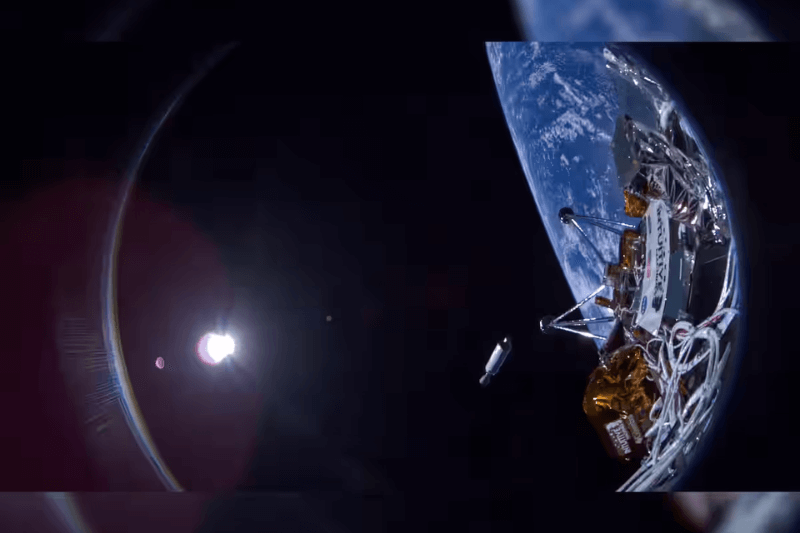
Touching the Moon: The Saga of Odysseus and the IM-1 Lander
Know About the IM-1 Lander: Odysseus
The recent achievement of Intuitive Machines’ IM-1 lander, affectionately dubbed Odysseus or “Odie,” marks a significant milestone in space exploration. This groundbreaking event saw the successful soft-landing of a commercial spacecraft on the lunar surface, a feat not accomplished by the United States since the Apollo program over fifty years ago.
A Historic Moment: First Commercial Lunar Landing
The successful touchdown of Odysseus on the moon represents a historic moment in space exploration. Not only is it the first commercial spacecraft to soft-land on the lunar surface, but it also marks the return of the United States to the moon after more than half a century. This achievement underscores the power of NASA’s commercial partnerships and sets the stage for future lunar exploration endeavors.
The journey to the lunar surface was not without its challenges. Just hours before landing, Odysseus encountered unexpected issues with its navigation systems. However, quick thinking and decisive action allowed the mission to proceed, showcasing the resilience and adaptability of the team behind the operation.
Keep Reading
Mission Objectives: Exploring the Lunar Terrain
One of the primary objectives of the Odysseus mission is to explore the lunar terrain near Malapert A, an impact crater located close to the moon’s south pole. This region is of particular interest due to its suspected stores of water ice, which could play a crucial role in future lunar exploration and colonization efforts.
Onboard Odysseus are six science payloads developed by various NASA laboratories, each designed to gather valuable data about the lunar environment. These payloads will focus on demonstrating communication, navigation, and precision landing technologies, as well as conducting scientific observations of the moon’s surface and space weather conditions.
Collaboration and Innovation: Art and Technology
In addition to scientific instruments, Odysseus is carrying a variety of innovative payloads, including insulation material developed by Columbia Sportswear to protect the lander from extreme temperatures. Furthermore, collaborative efforts with artists and students have resulted in commemorative payloads and a camera designed to capture a unique perspective of the lunar landscape.
Looking Ahead: The Future of Lunar Exploration
The success of the Odysseus mission represents a significant step forward in NASA’s efforts to explore and understand the moon. As the Artemis program continues to progress, with plans for crewed missions to the lunar surface in the near future, commercial partnerships like the one with Intuitive Machines will play a crucial role in advancing lunar exploration efforts.
The historic Odysseus moon mission represents a remarkable achievement in space exploration, showcasing the capabilities of commercial spaceflight and paving the way for future lunar exploration endeavors. With its successful landing and deployment of scientific payloads, Odysseus has demonstrated the potential for collaboration and innovation in the quest to explore the cosmos.




